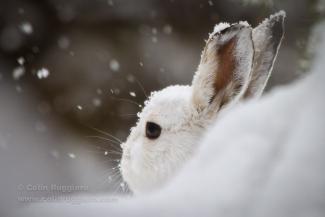Event
The evolution of seasonal camouflage
Department of Biology Seminar Series
Jeffrey Good, Ph.D., University of Montana

Adaptation to environmental change is central to the origin and persistence of species. Mismatches between the timing of key life history events and optimal environmental conditions have emerged as an important threat to biodiversity, yet the evolutionary dynamics of most seasonal adaptations remain poorly understood. We have used extensive museum archives to map geographic clines in polymorphic winter white versus brown seasonal pelage camouflage of several species against local climatic variables, identifying global regions that are likely to foster rapid evolutionary responses to changing climates. Building on this overarching framework, we have begun to independently dissect the genetic underpinnings of locally adaptive winter coat color. In the snowshoe hare, we have combined population genomic association mapping with pedigree analyses and functional genomic studies in captive animals to dissect the genetic basis and evolutionary history of alternative winter white versus brown pelage morphs. Our results reveal a striking history of parallel evolution and gene flow (introgression) between species shaping past and ongoing local adaptation in seasonal camouflage. Collectively, these studies provide one the first examples of a clear genotype-to-phenotype-to-fitness link for a seasonally flexible trait. These findings yield important insights into how this crucial component of seasonal flexibility may respond to rapid environmental changes in snowshoe hares and other species.
